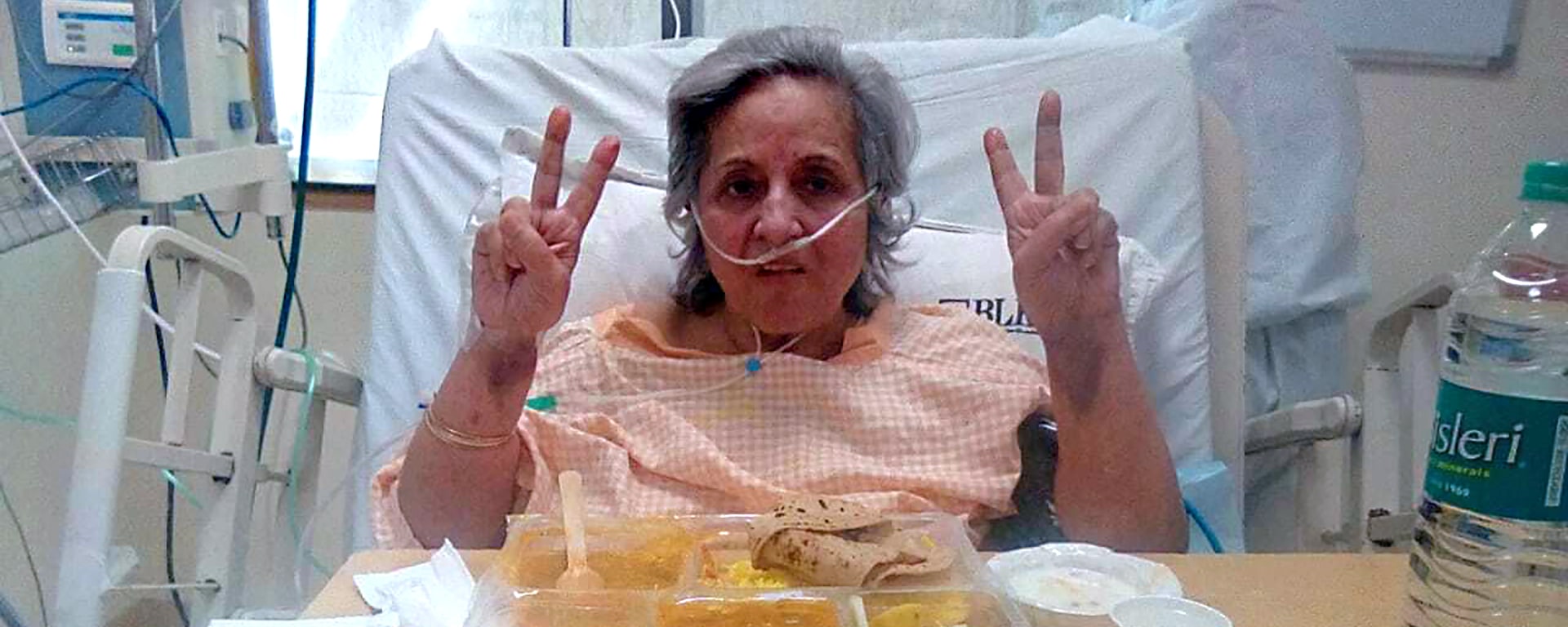One family's story
Amit Malik, one of Signavio’s senior consultants, had a difficult start to 2020, when his father passed away suddenly. Amit and his family were just dealing with that loss when another catastrophe hit. Of course, this one didn’t just strike the Malik family, but families and communities worldwide: the COVID-19 pandemic.
Amit’s mother Naresh (pictured above) and his wife Bhawna both tested positive for the novel coronavirus. “The biggest challenge was, nobody expected this kind of thing to happen. Nobody had anticipated it, so nobody knew what to do. For both my mom and my wife there has been a psychological impact - your thought process goes negative.”
For Amit himself, his world turned into a constant stream of sanitization, video calls with doctors, hospital coordination, and caring for two children, not to mention the challenges of collecting food and medicine in New Delhi during lockdown. As he says himself, “I’ve never done so much multitasking in my life!” No doubt a familiar story to many thousands of people around the world facing their own battles with the pandemic.
But Amit’s story is a little different, and takes a high-tech turn.
Connecting patients in need
One of the treatments suggested for his elderly mother was plasma therapy, which involves transplanting the blood plasma from people who have recovered from COVID-19 into patients still fighting the virus. This can help stave off the impact of the disease, until those patients can start producing antibodies of their own.
The issue was connecting plasma donors to patients. In searching for a possible donor, Amit found himself in a WhatsApp group where he says he saw, “100, 200 messages or more every day, people just randomly putting messages, ‘My mother needs it, my father needs it, this is the blood group, this is the hospital…’ It was a fairly manual process, scrolling through WhatsApp requests and making notes in a notepad.”
Amit recognized this as a process in need of optimization—and more importantly, as a way he could help. By creating a workflow in Signavio Process Governance, Amit helped the KAB Welfare Foundation digitize their manual data collection and donor matching service. This meant plasma donors and potential recipients could be connected faster and more easily.
A much-needed workflow
The workflow Amit created lets people register as a patient, requesting plasma and providing details like a recommendation from their hospital or doctor, or as a voluntary plasma donor. All data collected is also shared with relevant government health officials for support and coordination.
Amit spent just two hours one evening building the workflow, then spoke to the KAB Welfare Foundation staff who were administering the social media group, Mr. Vivke Jain and Ms. Bhawna Arora.
Amit says the simplicity of the solution was a big help: “The admins were not very tech savvy, but they were wowed. Initially it took some time because we had to reinforce the message again and again to use the workflow link we provided, but to date we have nearly 500 patient registrations and helped connect over 70 plasma donors, in collaboration with individuals and government departments.”
How to find the right plasma donor?
While plasma therapy is still considered an experimental treatment for COVID-19, that hasn’t stopped people looking for a chance to help out. As Amit says, “One of the donors I personally spoke to said they just didn’t know where to help. Because they were a doctor, they knew they could donate plasma, but they were looking for a platform where they could go and donate. We gave donors the chance to come forward and help, no matter their circumstances.”
Amit remembers a donor who was particularly motivated: “One guy donated twice. He had a family of nine, and all nine of them had COVID-19. His wife was eight months pregnant, and when the baby was delivered, the baby tested positive as well. All nine fortunately recovered, but this guy was really desperate to help, and we were able to make that possible.”
Digitization to the rescue
The workflow digitized the entire manual process of scrolling through hundreds of messages every day and keeping track of who has requested what, significantly reducing administrative effort. “From the user perspective, rather than repeatedly sending the same request across different media, you have one place where you have registered. Additionally, once people realized how easy this was and how useful, they could then help others by spreading the word about the workflow, saying ‘It worked for me, why don’t you register here too.’”
With the infection rate in India recently spiking after a slow decline, Amit says the workflow will likely stay online throughout 2020. His message remains the same: “Even with our busy schedules, the change of work style, work from home and all of that, you can still help. Even if you can’t help monetarily or through other means, then the psychological help which you can give people dealing with the virus, or supporting people who are sick is crucial. You can speak to them, and spread positive messages.”
It’s an approach that seems to work for Amit and his family. The language of medical diagnosis aside, with his efforts using process management technology to support COVID-19 patients, Amit really has been turning a negative into a positive.
For more on how to respond to challenging circumstances, check out our guide covering 5 Ways Process Management Helps Your Business in a Crisis. Or, discover more about the basics of workflow management with our deep dive into Workflow Optimization: Bringing Processes to Life.

